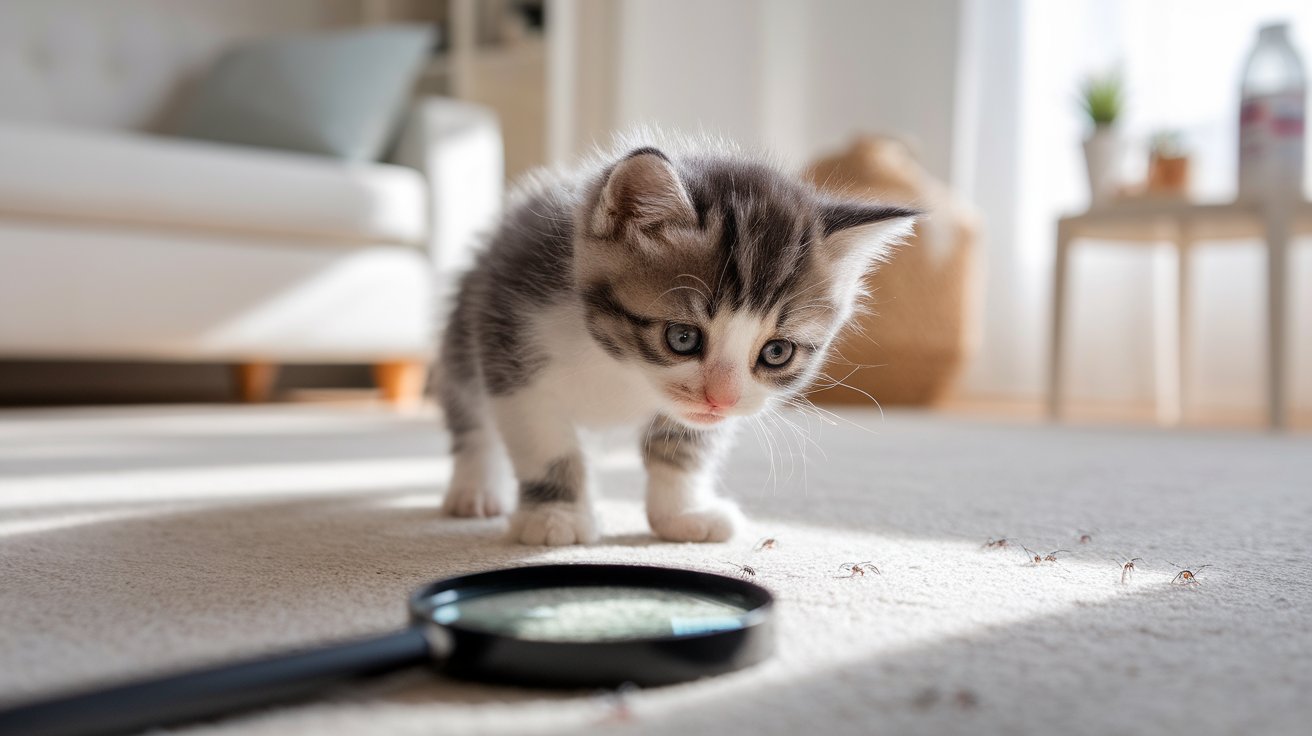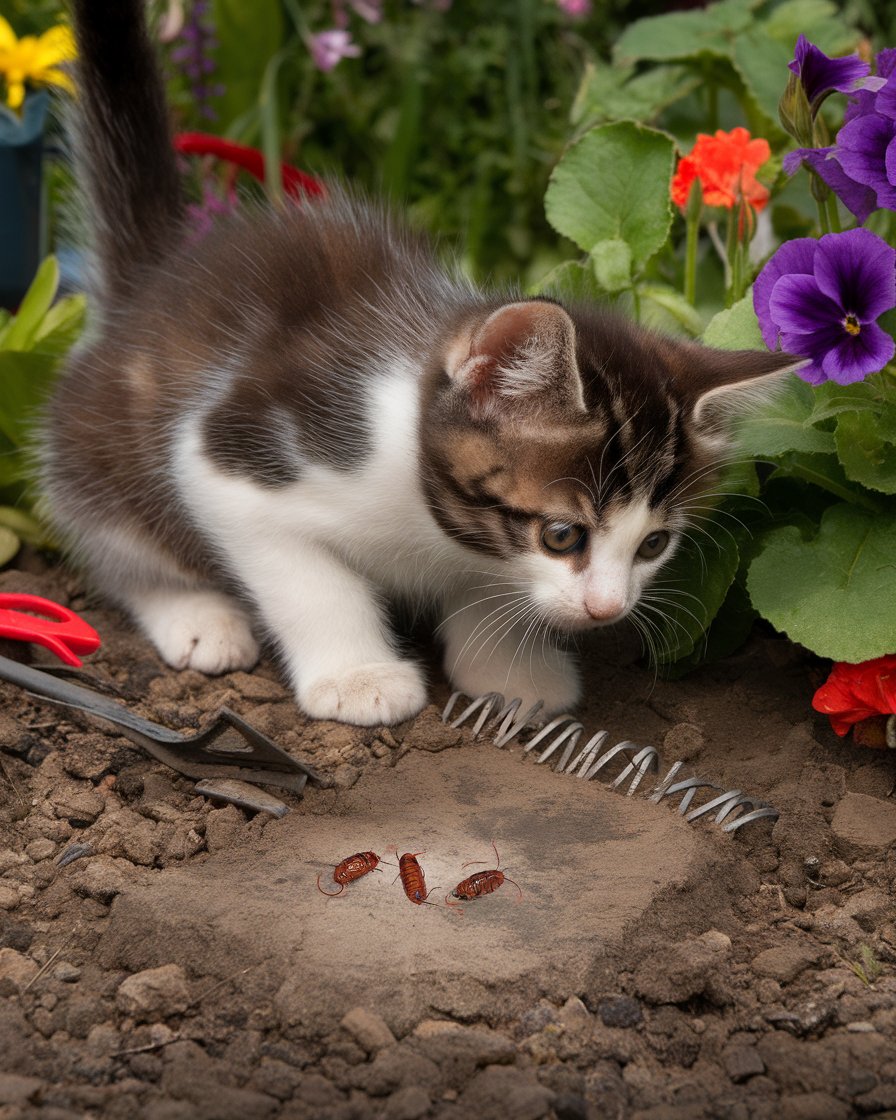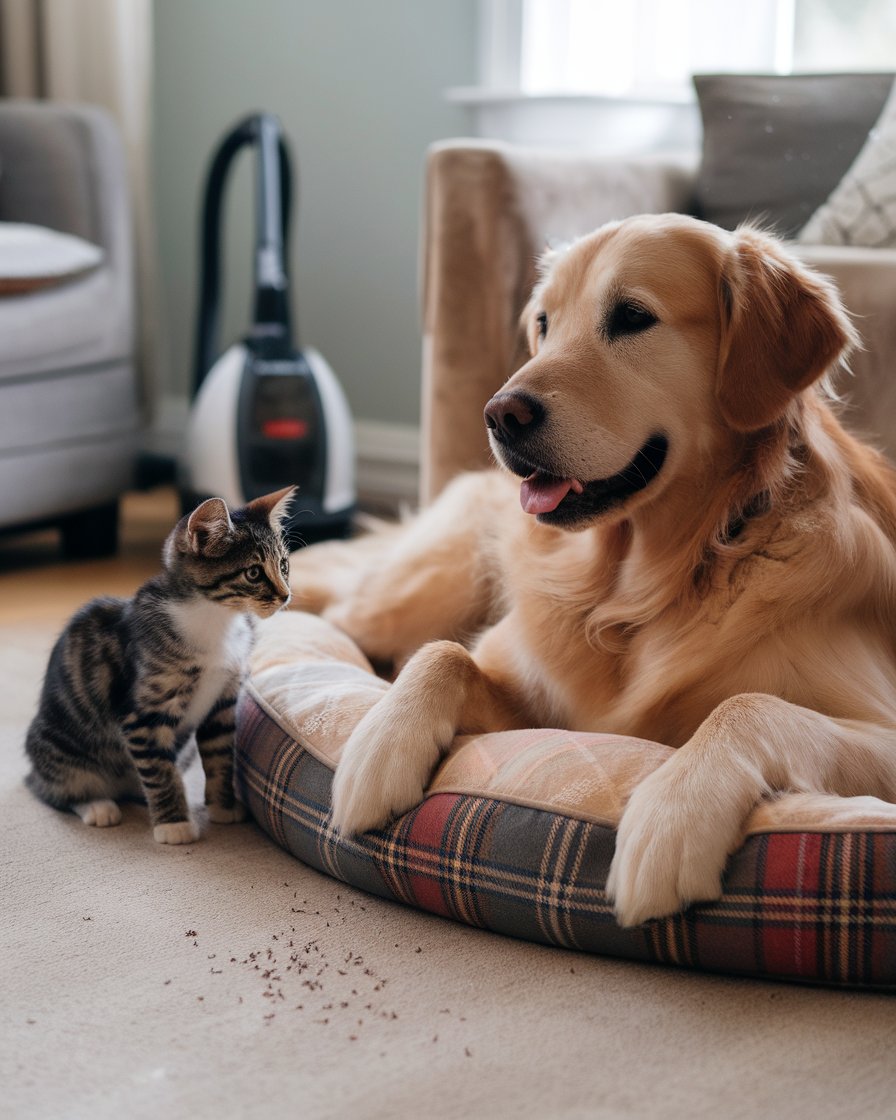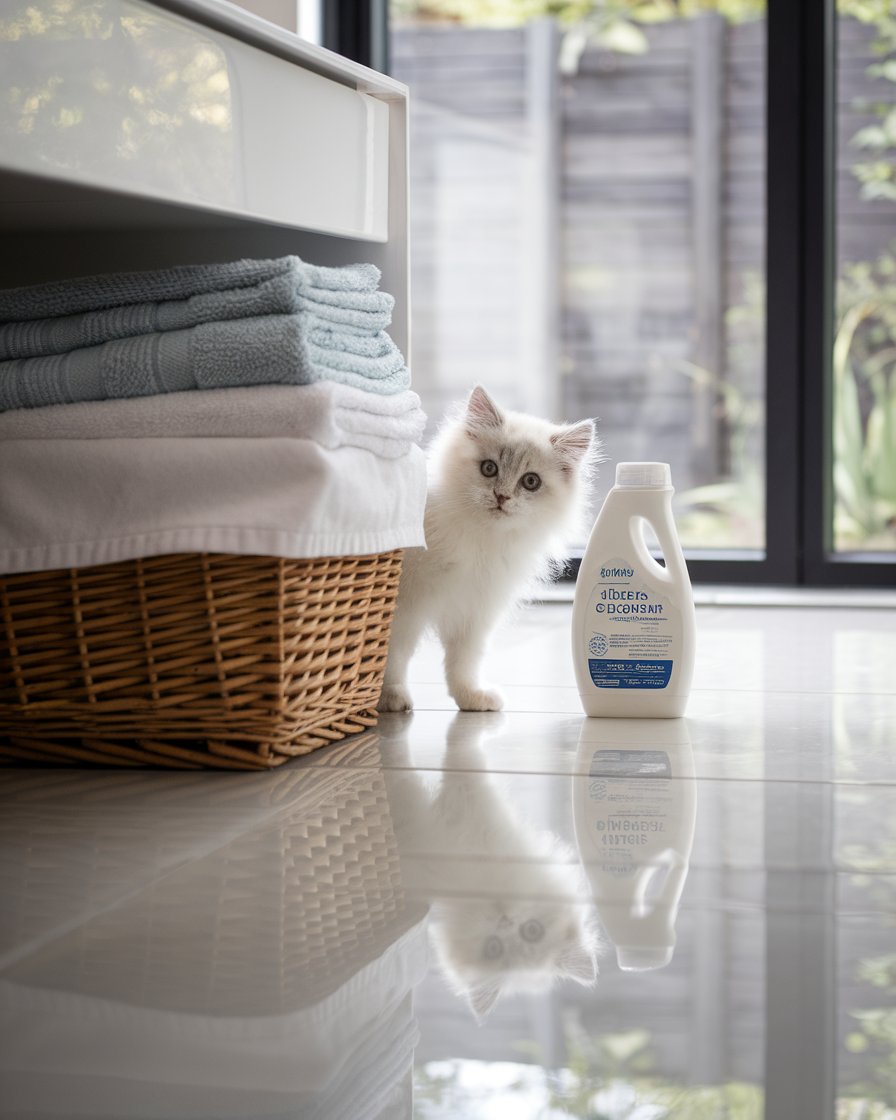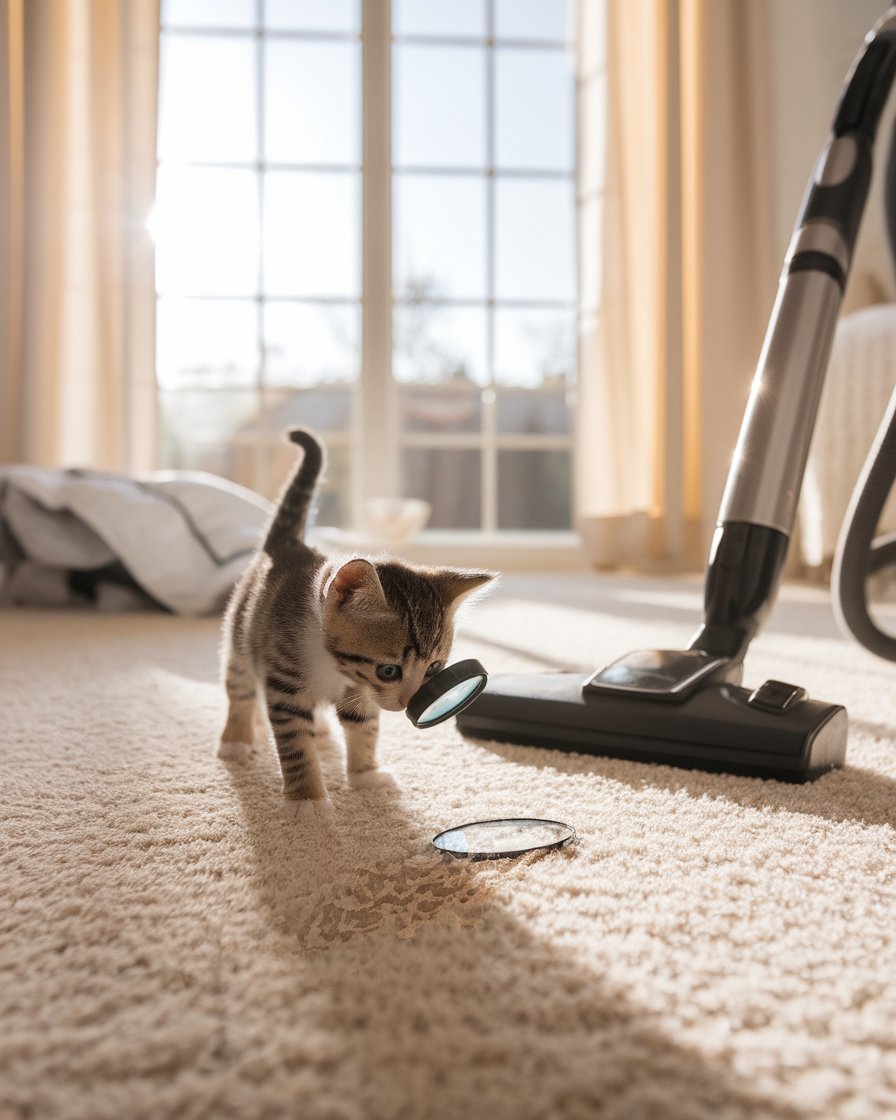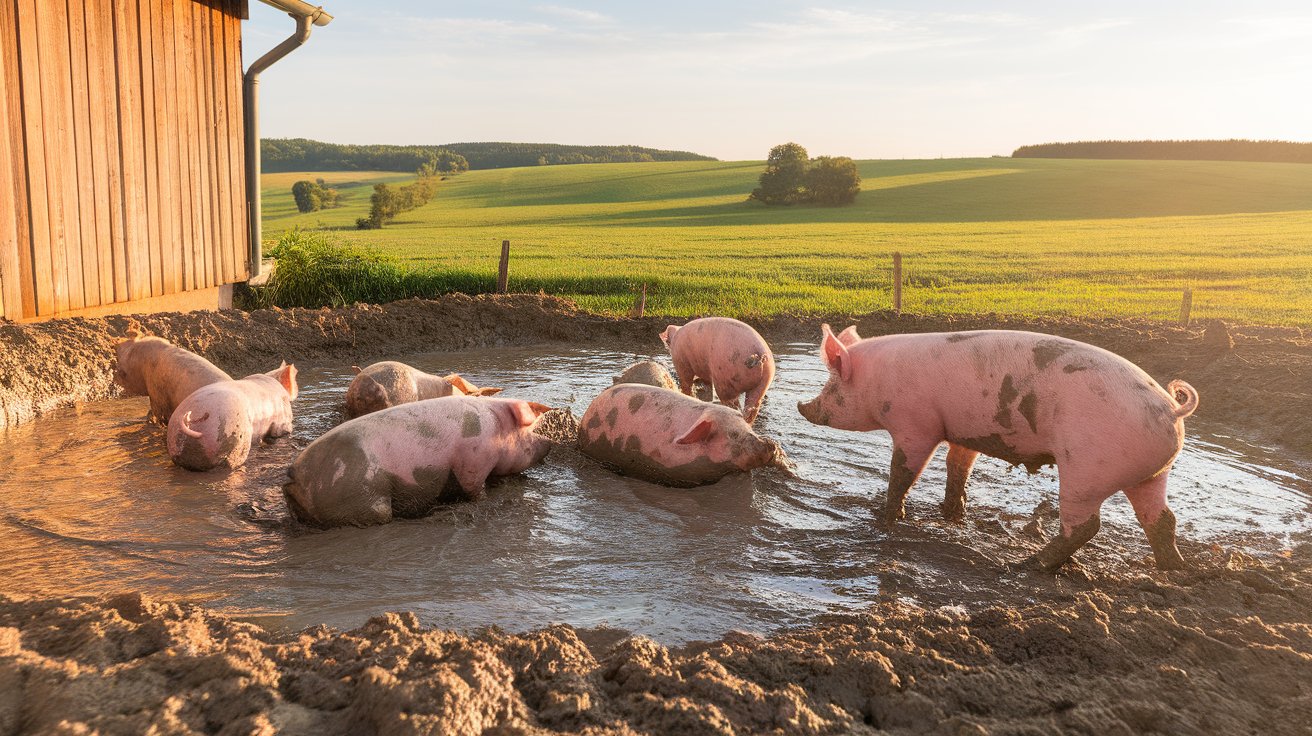Introduction
Flea larvae play a crucial role in the flea life cycle, and their movement is limited but impactful in spreading infestations. Unlike adult fleas, which can jump onto pets or humans, flea larvae remain grounded, feeding on organic debris like pet fur or flea feces. They are most commonly found in pet bedding, carpets, and upholstery, where fleas begin their life cycle. The larvae move only a few feet from where they hatch, depending on the conditions. Preventing and controlling flea infestations starts with understanding the larvae’s role and behavior.
In most cases, flea larvae can survive for up to 11 days, during which they prepare to pupate and become adult fleas. Keeping homes clean, regularly washing pet bedding, and using products that kill fleas at every life stage can be effective strategies. Fleas move through four life stages, and stopping the spread early by targeting the larvae can prevent future infestations from escalating.
Key Takeaways
-
Flea larvae are limited in movement, typically staying close to where they hatch, often within a few feet.
-
Flea larvae thrive in warm, humid environments and feed on organic debris like flea feces and shed skin.
-
Without a nearby host or sufficient food, flea larvae struggle to survive and may die before reaching adulthood.
-
Flea larvae depend heavily on their environment and hosts for food sources, impacting their ability to mature.
-
Regular cleaning, including vacuuming and washing pet bedding, is essential in controlling flea larvae spread.
-
Professional treatments and eco-friendly options like nematodes can effectively target flea larvae and prevent infestations.
How Far Can Flea Larvae Travel Without a Host?
Flea larvae, unlike adult fleas such as the dog flea, cannot move far. Their main task is to feed and eventually become adult fleas. Most larvae stay close to where they hatch, moving only a few feet. They feed on organic matter like flea dirt, which sustains them. Without nearby hosts, many fleas struggle, and the larvae might die before adulthood. Understanding this limited movement is essential for an effective flea control plan. Regular cleaning and products kill fleas early in their life cycle, ensuring larvae don’t develop into adults. Flea control starts from the first application, targeting their habitat to stop their spread before fleas can bite.
Flea Control: How Far Can Flea Larvae Travel Without a Host
Flea larvae are a crucial part of the flea life cycle, and their limited movement plays a significant role in how infestations develop. Here’s a fact-checked list that provides insights into the limitations of flea larvae travel and its impact on flea control.
1. Limited Movement Range
Flea larvae typically remain within a few feet of their hatching area. Unlike adult fleas, they do not have the ability to jump or move quickly. Their movement is limited to crawling in search of food, and they rarely travel more than a few feet from where they were born.
2. Dependence on Organic Debris
Flea larvae rely on flea dirt (adult flea feces) and other organic materials to survive. Without a nearby source of nourishment, such as the presence of pets, their mobility is severely limited. Homes with pets or high organic debris levels are more likely to see larvae spread within carpets and bedding.
3. Environmental Factors Impact Travel
The environment significantly affects flea larvae movement. Larvae thrive in warm, humid environments. If these conditions are not met, larvae are less likely to travel or survive. Dry, well-ventilated areas reduce their ability to move and develop into adult fleas.
4. Impact of Host Presence
Without a nearby host, flea larvae are unlikely to mature. The presence of a host indirectly supports larvae survival by creating a habitat rich in organic debris. In the absence of a host, larvae often die before they can reach adulthood.
5. Cleaning and Flea Control Methods
Regular cleaning, including vacuuming carpets and changing pet bedding, helps to eliminate flea larvae. These methods disrupt their food supply and prevent them from traveling far. Using products that target flea eggs and larvae can further reduce their chances of survival.
6. Vulnerability Without a Host
Flea larvae are particularly vulnerable when no host is present. They do not feed on blood but rely on environmental factors to survive. Without adequate food or favorable conditions, larvae are likely to perish before maturing.
Distance and Limitations of Flea Larvae Travel
Flea larvae are not equipped to travel far. Measuring just 1 to 3 mm in length, they crawl slowly in search of food and favorable conditions. Most larvae stay within the first few feet of their hatching area, rarely venturing beyond. They need a warm, humid environment to survive, along with a steady supply of organic debris for nourishment. However, when a home becomes infested with fleas, larvae can scatter throughout carpets, bedding, and pet areas. The key to controlling their spread is regular cleaning, including vacuuming and changing pet bedding, which can eliminate potential food sources and larvae.
Impact of Lack of Host on Flea Larvae Mobility
When flea larvae are deprived of a host or food, their survival prospects drop sharply. They do not feed on blood like adult fleas but instead rely on organic debris in their surroundings. If these resources are scarce, their movement remains minimal, and they cannot survive long without sustenance. This makes larvae particularly vulnerable in environments without pets or animals. However, in areas where flea infestations are untreated, larvae can persist and thrive until they mature. An effective flea control program involves treating the environment with products that kill flea eggs and larvae, preventing future infestations before they escalate.
The Role of Hosts in Flea Larvae Travel
Flea larvae are highly dependent on their environment for movement and survival. Unlike adult fleas, which can cause flea bites, larvae do not actively seek out hosts. Instead, they rely on organic debris like flea feces and shed skin to sustain themselves until maturity. Although they can crawl, their movement is minimal, making it difficult to thrive without a host nearby. The availability of a host significantly impacts larvae development since adult cat fleas or dog fleas lay eggs where hosts frequently rest. This close proximity to food sources is crucial for larvae to survive and develop into adult fleas. Regular cleaning and using a flea comb and a good treatment for fleas can help remove eggs and larvae, reducing the chances of infestation.
Influence of Hosts on Flea Larvae Movement
The presence of a host significantly impacts how far flea larvae can travel. Adult fleas, which feed on the blood of animals like cats and dogs, lay eggs near their hosts, ensuring that the larvae have a steady food supply from the debris in the environment. Larvae can crawl a few feet in search of nourishment, but their movement is slow and limited. If a host is nearby, the larvae benefit from the organic matter left behind by adult fleas and other animals. Fleas prefer to live in areas where they can find consistent access to a blood meal, which supports the entire flea life cycle.
Host Preferences for Flea Larvae Travel
Flea larvae thrive in environments where pets or other animals spend a lot of time. These areas are rich in organic material, like flea feces, which the larvae feed on. In homes with cats and dogs, especially those infested with fleas, the larvae often gather in bedding, carpets, and cracks where adult fleas live and bite their hosts. The larvae’s ability to survive is closely linked to the adult flea population, as well as the cleanliness of the environment. Regular use of flea control products, like vacuum cleaners and flea treatments, can reduce the number of larvae by removing their food sources and killing eggs before they develop further.
Methods of Controlling Flea Larvae Travel
Controlling flea larvae is crucial to prevent a full-blown infestation in your home. Flea larvae are small, white, worm-like creatures that thrive in dark, moist areas like carpets, cracks in the floor, and pet bedding. They feed on organic matter such as adult flea feces, and if left unchecked, they develop into adult fleas. The key to managing flea larvae is maintaining a clean environment and using effective treatments that target all life stages of fleas. By disrupting their habitat and life cycle, you can prevent larvae from maturing into adult fleas, which ultimately reduces the number of fleas in your home.
Case Study: Effective Flea Larvae Control Methods in Homes
A comprehensive study on flea control, particularly the management of flea larvae, was conducted to examine the most effective prevention and treatment strategies. One notable case involved a family home with severe flea infestations, particularly in areas where pets frequently rested. Initial steps involved regular vacuuming of carpets and cleaning of pet bedding, which helped remove a significant portion of flea eggs and larvae. However, this alone was insufficient to fully eliminate the infestation.
The breakthrough came when the family introduced an eco-friendly treatment using nematodes—tiny organisms that prey on flea larvae in outdoor areas like yards. Combined with the use of insect growth regulators (IGRs) inside the home, which disrupted the flea life cycle, the family successfully reduced the flea population over several weeks. Regular follow-up treatments with IGRs and continued maintenance of the home environment helped prevent re-infestation, proving this dual approach highly effective in flea control.
Prevention Strategies for Limiting Flea Larvae Movement
Preventing flea larvae from spreading starts with a strong cleaning routine. Regular vacuuming is one of the most effective ways to remove flea larvae from carpets, rugs, and furniture. Fleas prefer to live and breed in areas where pets spend a lot of time, so it’s important to vacuum frequently in these spots. Changing your pet’s bedding regularly is also essential, as larvae can hide in the fabric. Flea larvae are particularly vulnerable to dry environments, so keeping your home dry and well-ventilated can help limit their movement and development. A well-maintained yard, free of overgrowth, can also reduce flea populations outside your home.
Treatment Options for Eliminating Flea Larvae Infestations
When cleaning alone isn’t enough, treatment options such as insecticides and other flea control products can effectively target flea larvae. Products that kill fleas at various life stages are the best choice to break the flea cycle. For eco-friendly alternatives, nematodes are tiny organisms that can be introduced into your yard to naturally attack and kill flea larvae. In more severe cases, professional pest control services can treat your home and yard with chemical insecticides that specifically target flea larvae, without harming pets or people. To maintain control over flea larvae, regular follow-up treatments may be necessary, especially in homes that have been heavily infested.
Practical Tips for Effective Flea Larvae Control
Managing flea larvae is key to preventing a larger flea infestation in your home. Flea larvae hide in carpets, pet bedding, and dark corners, feeding on organic debris until they can mature. To keep flea populations under control, a combination of preventive practices and treatments is necessary. Flea larvae are particularly vulnerable to environmental changes, so regular cleaning, combined with targeted pest control strategies, can significantly reduce their numbers. By addressing the issue early, homeowners can avoid the discomfort and health risks associated with flea infestations.
Best Practices for Preventing Flea Larvae Spread
One of the best ways to stop flea larvae from spreading is through regular cleaning routines. Frequent vacuuming removes adult fleas, flea larvae, and eggs from carpets and upholstered furniture. Focus on areas where pets spend a lot of time, as fleas prefer these warm, cozy spaces. Additionally, cleaning and changing pet bedding at least once a week will eliminate potential hiding spots for larvae. Maintaining your yard is also essential. Fleas thrive in overgrown areas, so keeping grass and shrubs trimmed prevents infestations from spreading outdoors. These proactive steps can drastically reduce the chances of larvae maturing into adult fleas.
Strategies for Monitoring and Treating Flea Larvae Infestations
To catch flea infestations early, homeowners can use flea traps to monitor for adult flea activity, which often indicates the presence of larvae. When an infestation is detected, various treatments are available. For eco-conscious homeowners, nematodes—tiny worms that naturally prey on flea larvae—can be introduced into the yard to help reduce larvae populations. For more severe cases, professional pest control services may apply insecticides that specifically target flea larvae without harming pets or humans. These treatments, combined with regular follow-up care, ensure that flea larvae are effectively eliminated and don’t return to re-establish an infestation.
“The flea, though he kill none, he does all the harm he can.” — John Donne
Conclusion
Controlling flea larvae is essential to preventing a full-blown flea infestation. By understanding their life cycle, we can take effective measures to reduce their spread. Flea larvae, especially from the cat flea (ctenocephalides felis), rely on organic debris for sustenance and remain close to where they hatch. Regular cleaning, including vacuuming and washing pet bedding, combined with products that kill fleas at every life stage, can make a significant impact. Flea larvae may survive for up to 11 days, so treating all infested areas, including carpets and upholstery, is crucial.
For long-term prevention, it’s important to maintain cleanliness and use treatments that target flea eggs, larvae, and adult fleas. Nematodes or professional pest control services can help eliminate flea larvae from outdoor spaces. Flea control products and regular applications are critical in disrupting the flea life cycle, ensuring that fleas do not mature and cause further issues. Consistent follow-up treatments are key to reducing the chances of re-infestation.

